A beautiful small island, unique and largely untamed, with welcoming inhabitants. A paradise for scuba diving and fish, with extraordinary seabeds and a marine reserve rivalled by few in the Mediterranean, and very well-equipped diving centres. A fascinating history.
This is Ustica: a jewel rising out of the sea spray.
The magical island of Circe is immersed in the blue Tyrrhenian Sea only 67 km from Palermo. In less than 9 square kilometres there’s history, art, nature, adventure and culture. It has a fantastically mild climate and scanty vegetation full of olive and almond trees, vines, broom and the characteristic Mediterranean steppe.
Ten ways to explore it!
- The Sea
Coves with pebbly sand, beautiful caves, incredible colours and crystal-clear water.
Cala Sidoti, located on the eastern side of the island, has a shallow seabed near the shore and is therefore recommended for children.
Right next to it are the Scogli Piatti, flat rocks ideal for relaxing in the sun in a picturesque setting.
Piscina Naturale is a clear stretch of water surrounded by a cliff and communicating with the sea under the Punta Cavazzi lighthouse.
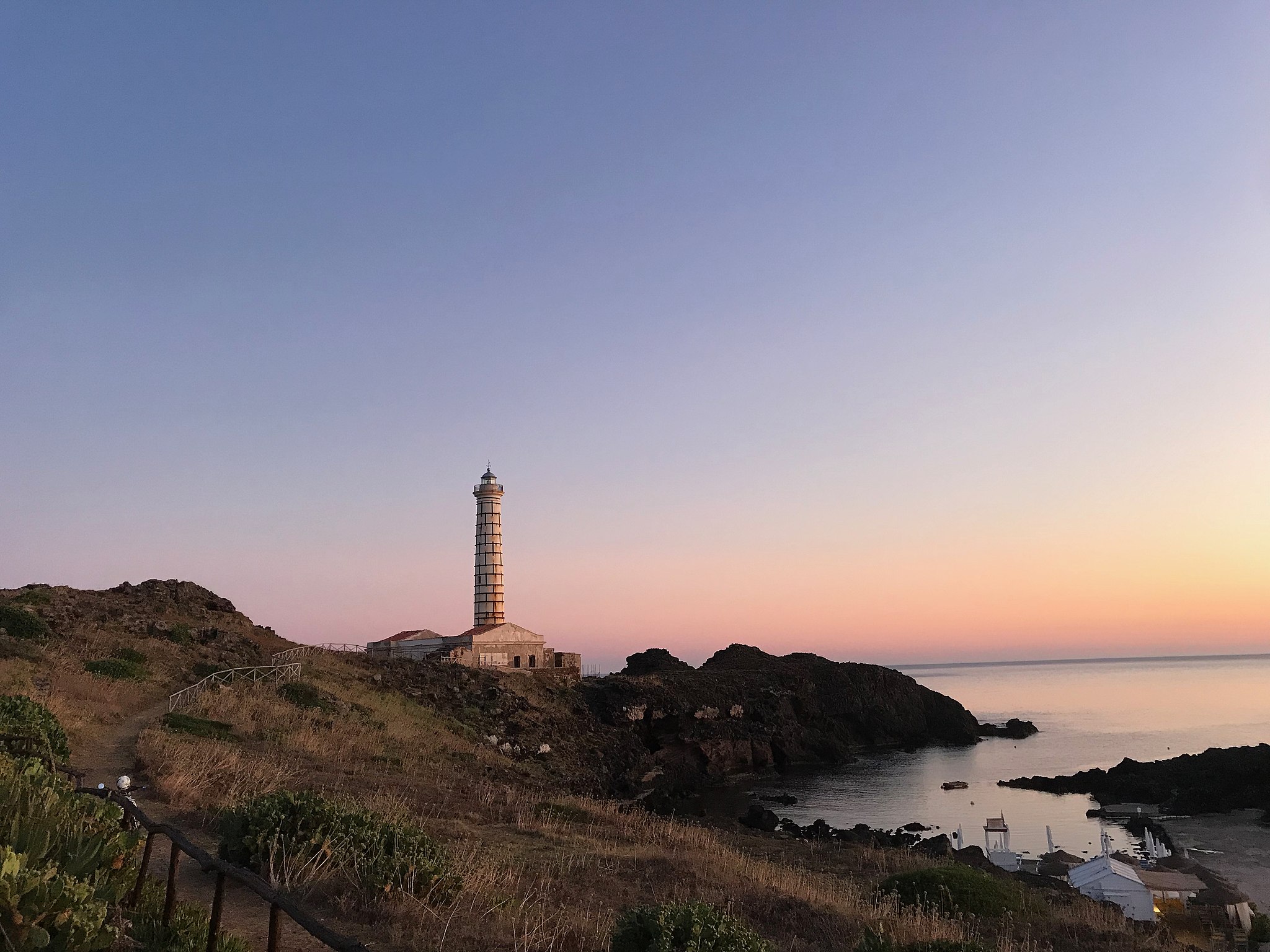
Faro – Stephen kleckner, CC BY-SA 4.0, via Wikimedia Commons
In the northern part of the island, near the prehistoric village of Faraglioni, there are the small coves of Curruggio beach.
- A boat trip
Treat yourself to a boat trip in the caves and be enchanted by Ustica’s sea in all its shades of light and colour.
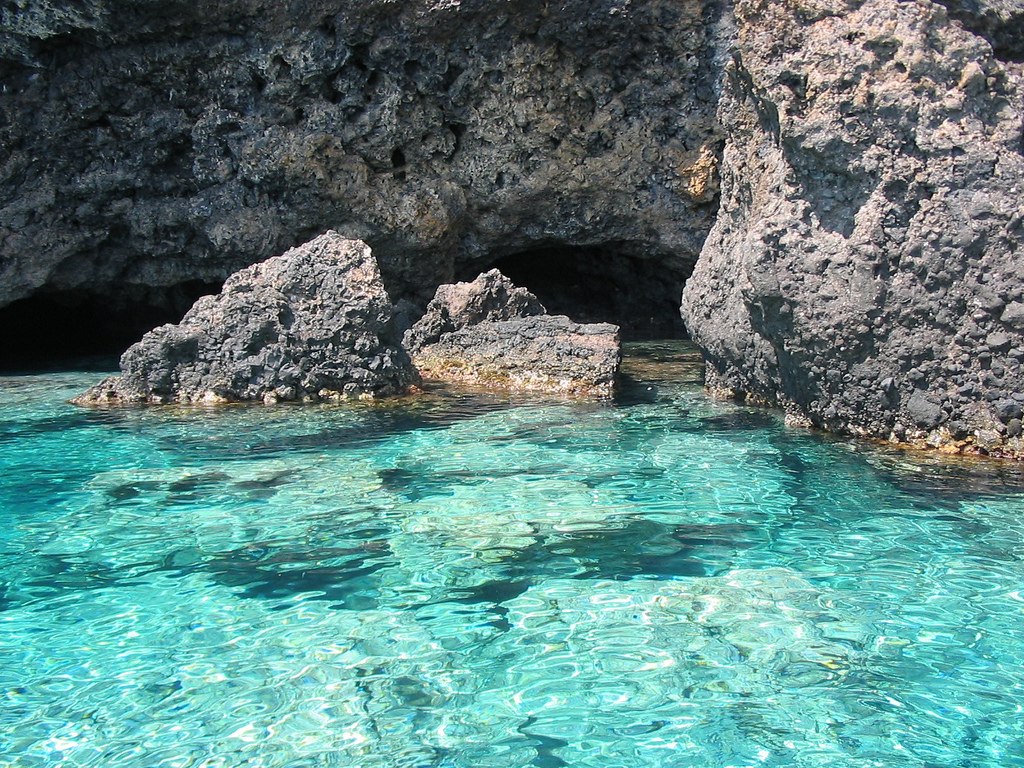
Grotta – fab., CC BY 2.0, via Wikimedia Commons
- Diving
Ustica is the site of Italy’s first Marine Protected Area and offers truly unique wonders of Mediterranean marine flora and fauna. Ustica is thus a marine and archaeological paradise just waiting to be explored, especially by divers and lovers of the sea. There are various beautiful seabeds to choose between.
Near the Scoglio del Medico there are some marine fauna now rarely found in the Mediterranean, principally barracuda, grouper, sea bream and amberjack.
Punta Galera and the Scoglio del Medico make one of the most fascinating areas for diving due to the presence of the Grotta dei Gamberi, with its colony of small crustaceans with antennae at a depth of around 37 metres.
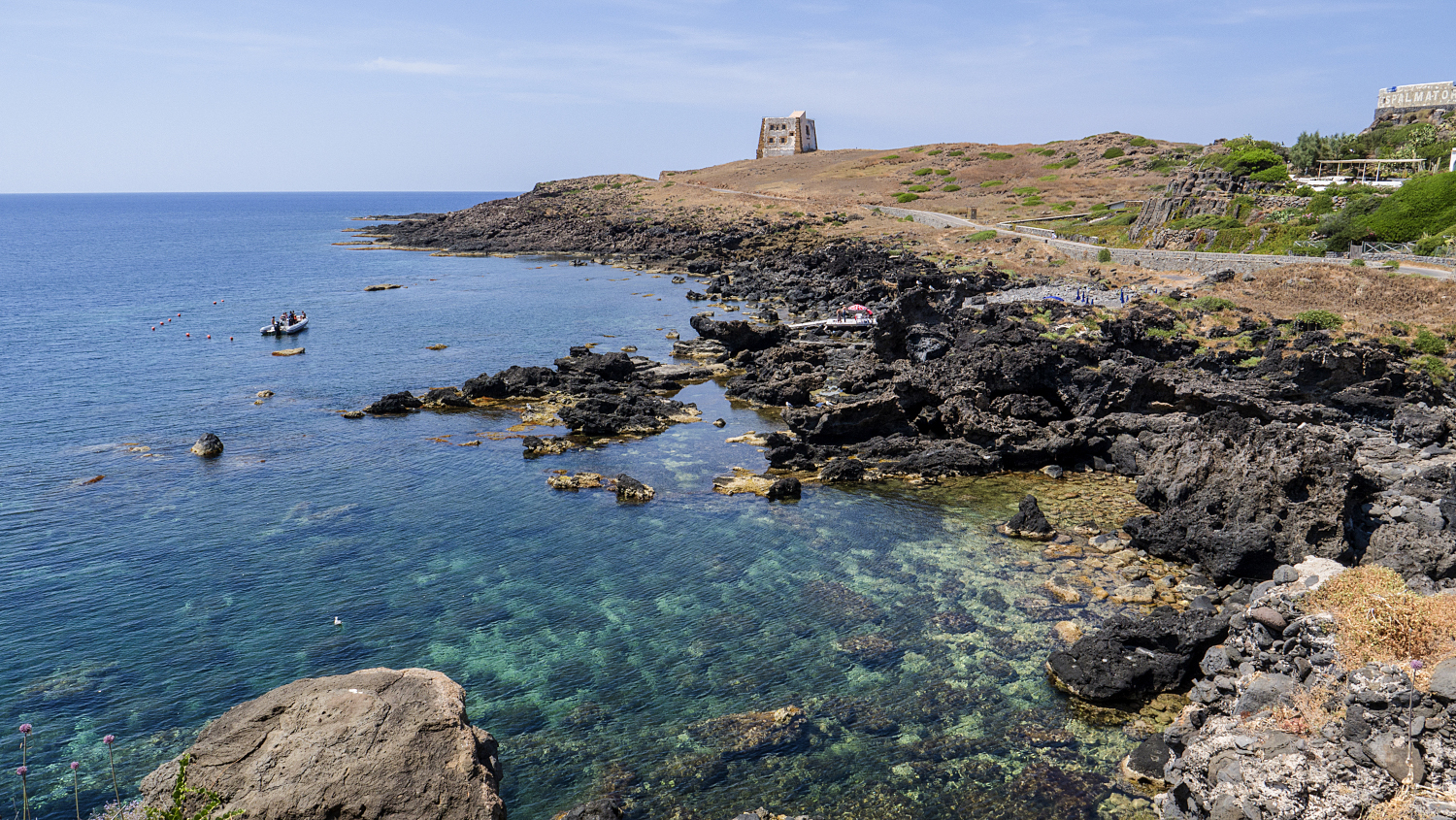
Ustica – ph. Barone
The sandy Secchitello seabed with its large boulders is entirely covered by benthic organisms and by white sand which reflects the surreal atmosphere’s sunlight.
In the Grotta delle Cipree you’ll see a unique spectacle: stalactites and tree roots hanging down over the water.
Punta dell’Arpa, at a depth of 35 metres, is recommended for those with an advanced scuba diving licence; there’s a rockfall of large boulders after which you reach rocks literally covered by red gorgonia coral.
- Walks and paths
The area’s topography inspires you to walk, so as to discover the native species of the Riserva Orientata Isola di Ustica. The nature reserve’s paths run over gentle slopes, reminders of its volcanic origin, allowing you to enjoy vivid landscapes surrounded by the blue sea, the azure sky and some magnificent sunsets. The varied and unique Mediterranean scrub changes with the seasons with a mixture of contrasting colours.
The southern Sentiero di Mezzogiorno route starts from the Torre di Santa Maria, a tower built by the Bourbons. You’ll get a brief, extraordinarily beautiful view over Cala San Paolo where, if you look carefully, you’ll see the faint signs of a deep fissure (the Spaccazza di San Paolo) descending steeply into the seabed. The path continues through Punta Galera and ends at Punta Cavazzi.
Rocca della Falconiera is an ancient archaeological site from the early Christian era and a viewpoint offering truly enchanting views: you can admire various underground tombs (3rd century BC) and a late Roman necropolis with rock-cut tombs.
The Sentiero del Bosco is an evocative walk through large areas of Mediterranean woodland. It starts in the north of the island and follows the road used by the charcoal burners who exploited the island’s natural resources.
- Sentiero della costa nord
This northern coastal path starts at Piazza del Municipio and runs along Via Petreria in the direction of Tramontana. After thirty metres the road forks by a small building which used to mark one of the boundaries between with neighbouring villages. On the right wall there’s a marble plaque placed here on 13 May 1906 in memory of the visit by the reigning Vittorio Emanuele III and Queen Elena after a very strong earthquake on the island. Take the cobbled road and then cut across a road on the right which leads to the Falconiera and continue to reach a beautiful view of Cala Giaconi and the cliff which overlooks it.
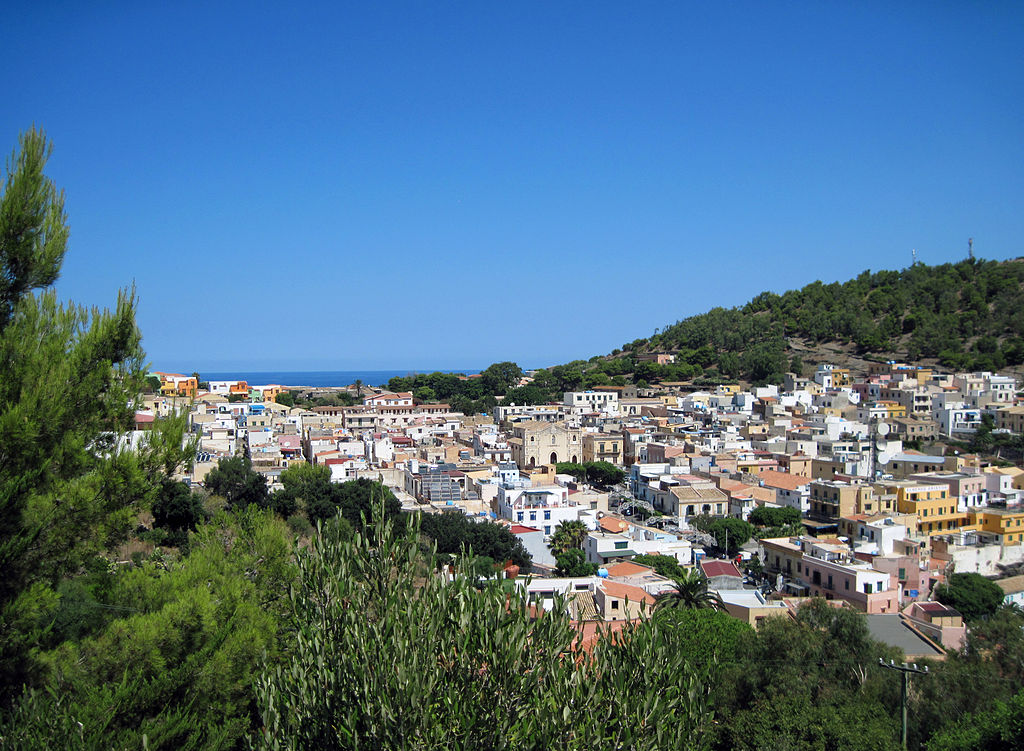
Ustica – Pavla Mačoková from Praga, Repubblica Ceca, CC BY-SA 2.0, via Wikimedia Commons
Still further on there’s the Gorgo Maltese, once used to collect rainwater and also used by the Romans. At the northernmost point of the island, you come across the Prehistoric Village of Faraglioni.
- Donkey walks
The thrilling idea of riding through an ancient village’s streets and over fabulous nature trails on the back of a lovely donkey, is really possible on Ustica.
An enjoyable route, also suitable for children, will transport you back in time and make your holiday unforgettable.
- On foot and by bicycle
On foot, the path around the island takes 5–6 hours. The climb up the wooded hill (monte Guardia dei Turchi, 244 m high) is much shorter. On the way you may see wild rabbits and, up in the sky, hawks. You can rent bikes at the port: there are challenging climbs and descents (slopes greater than 1 in 5) and flat stretches. Don’t let yourself be distracted by the view!
- Slow Food and Pizza Usticese
Ustica’s lentils, a recognised Slow Food Product of the Islands of Sicily, are unique and delicious. The pizza Usticese is a simple but tasty local delicacy, prepared with tomato sauce, anchovies, garlic and a few breadcrumbs.
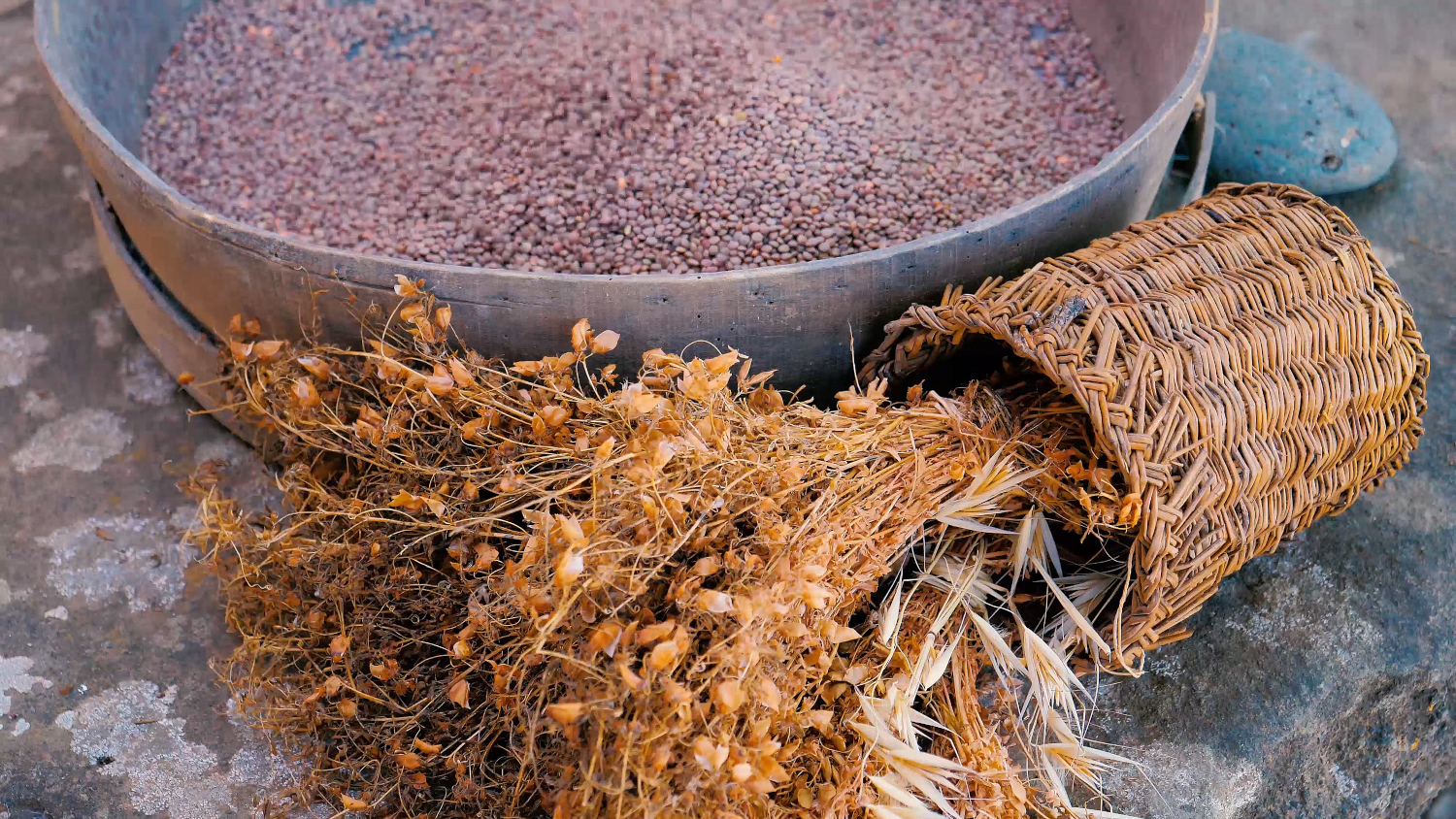
Lenticchie – ph. Barone
- Archaeological sites and museums
An open-air history book of both land and sea. Burials, tunnels and masses of archaeological finds, some even found underwater because of the many shipwrecks, testify to the constant presence of humanity since the Palaeolithic Age: the Phoenicians, the Greeks (who called it Osteodes), the Carthaginians and the Romans, who gave it its current name (from ustum, meaning burnt). For a long time, it was also the base and refuge of Saracen and Barbary pirates.
First of all, there’s the Prehistoric Village of Faraglioni, a settlement dating back to the Bronze Age with circular huts defended by a strong wall.
Don’t miss the Museo Archeologico Comunale “Padre Carmelo Seminara”. This archeological museum has finds from the Middle Bronze Age, domestic furnishings, obsidian tools and jewellery of various materials from the ancient prehistoric Faraglioni Village. The settlement is also partly preserved in the Museo Archeologico di Torre Santa Maria.
Take time to examine the Laboratorio-Museo di Scienze della Terra Isola di Ustica, a museum which traces the geological/volcanic history of the island’s formation. Finally, prepare to discover the past at the Museo della Civiltà Contadina e Marinara L.S. D’Asburgo, through Ustica’s agricultural tools, marine equipment and household objects.
- Festivals
To really get involved in island life and participate in local traditions, plan your trip to Ustica with the following dates in mind: the Festa della Madonna dei Pescatori takes place on the last Sunday in May; there’s the Festa del Santo Patrono San Bartolomeo on 24 August; the Madonna alla Croce is celebrated on the first Sunday in September; the second Sunday in September is the Festa di San Bartolicchio. Finally, don’t miss the Festa del Mare e dell’Area Marina Protetta in July which celebrates the sea and the marine protected area!

